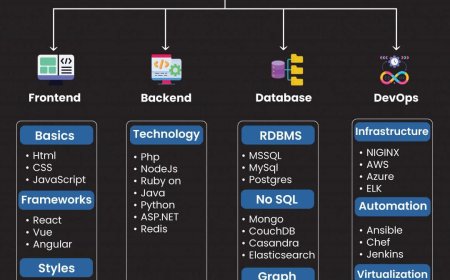How to find the best pizza in Omaha
How to Find the Best Pizza in Omaha Omaha, Nebraska may not be the first city that comes to mind when you think of world-class pizza, but beneath its Midwestern charm lies a thriving, deeply rooted pizza culture that rivals many larger metropolitan areas. From thin-crust Neapolitan pies baked in wood-fired ovens to deep-dish creations with bold, regional twists, Omaha offers a surprising diversity
How to Find the Best Pizza in Omaha
Omaha, Nebraska may not be the first city that comes to mind when you think of world-class pizza, but beneath its Midwestern charm lies a thriving, deeply rooted pizza culture that rivals many larger metropolitan areas. From thin-crust Neapolitan pies baked in wood-fired ovens to deep-dish creations with bold, regional twists, Omaha offers a surprising diversity of pizza experiences. Finding the best pizza in Omaha isn’t just about following trends or popular social media posts—it’s about understanding local ingredients, neighborhood traditions, baking techniques, and the passion behind each pie. Whether you’re a long-time resident, a newcomer, or a food-loving traveler passing through, this guide will equip you with the knowledge, tools, and strategies to uncover Omaha’s most exceptional pizzas—not just the most advertised ones.
The importance of knowing how to find the best pizza in Omaha goes beyond satisfying hunger. Pizza is a cultural artifact—it reflects the city’s history of immigration, its agricultural abundance, and its community-driven food ethos. The best pizzerias in Omaha often operate with generational recipes, source local dairy and meats, and prioritize craftsmanship over mass production. By learning how to evaluate these qualities, you’re not just choosing a meal—you’re engaging with the soul of the city. This guide will walk you through a proven, step-by-step process to identify, assess, and ultimately experience the finest pizza Omaha has to offer.
Step-by-Step Guide
Step 1: Define What “Best” Means to You
Before you begin your search, clarify your personal criteria for “best.” Pizza is subjective. For some, it’s about crispy, charred crust and fresh mozzarella. For others, it’s the thickness of the sauce, the balance of spices, or the generosity of toppings. In Omaha, you’ll encounter everything from Chicago-style deep dish to Detroit-style square pies, New York thin crust, and even Neapolitan-style wood-fired offerings. Ask yourself:
- Do you prefer thin and crispy or thick and chewy?
- Is sauce flavor more important than cheese quality?
- Do you value traditional recipes or innovative fusion toppings?
- Is ambiance and service part of the experience?
Writing down your preferences helps filter noise and focus your search. For example, if you prioritize authenticity and artisanal methods, you’ll likely gravitate toward pizzerias that mention sourcing ingredients from local farms or using stone-ground flour. If you crave bold, experimental flavors, you might lean toward newer spots that incorporate global influences like kimchi, goat cheese, or smoked brisket.
Step 2: Research Local Pizzerias Using Multiple Sources
Relying on a single review site or a single recommendation can lead you astray. The best way to build a comprehensive shortlist is to cross-reference multiple credible sources:
- Google Maps: Search “best pizza in Omaha” and sort by “Top Rated.” Look for places with 4.7 stars or higher and at least 100 reviews. Pay attention to recurring keywords in reviews—phrases like “perfect crust,” “fresh basil,” or “made from scratch” signal quality.
- Yelp: Filter reviews by “most recent” to catch changes in quality or management. Read between the lines—long, detailed reviews often reveal more than star ratings.
- Local Food Blogs: Sites like Omaha Magazine, Nebraska Life, and Omaha.com’s Food & Drink regularly publish curated lists and chef interviews. These sources often highlight hidden gems overlooked by national platforms.
- Social Media: Search Instagram and TikTok using hashtags like
OmahaPizza, #BestPizzaOmaha, or #NebraskaPizza. Look for posts from local food influencers who visit multiple spots and compare them side by side.
- Reddit and Facebook Groups: Join r/Omaha or local Facebook groups like “Omaha Foodies.” Ask for recommendations—locals often share personal favorites that don’t show up on mainstream platforms.
Compile a list of 15–20 pizzerias from these sources. Don’t eliminate any based on initial impressions—some of Omaha’s best pizzas are found in unassuming strip malls or converted gas stations.
Step 3: Analyze Menu Details and Ingredient Sourcing
A great pizza starts with ingredients. The best pizzerias in Omaha are transparent about where their food comes from. Look for these indicators on menus or websites:
- Locally sourced cheese: Mention of “Nebraska mozzarella,” “from local dairy farms,” or “hand-stretched by our cheesemonger” is a strong signal of quality.
- San Marzano tomatoes: Authentic Italian-style pizzerias often specify this variety, known for its low acidity and rich flavor.
- Stone-ground flour: Artisanal crusts often use heritage grains like King Arthur or Caputo 00, which produce superior texture and digestibility.
- House-made sauce: Avoid places that list “tomato sauce” without detail. The best spots describe their sauce as “slow-simmered with garlic, oregano, and basil,” often over several hours.
- Artisanal meats and toppings: Look for local pork sausage, smoked pancetta, or organic vegetables. Omaha’s proximity to cattle and hog farms means many pizzerias can source premium proteins.
Be wary of generic terms like “premium toppings” or “special blend.” Vague language often masks low-quality ingredients. The best pizzerias name their suppliers: “Our mozzarella is from Butterfield Creamery in Ashland,” or “Our pepperoni is cured in-house by Nebraska Meats Co.” These details matter.
Step 4: Visit and Observe the Kitchen (If Possible)
Many top-tier Omaha pizzerias allow customers to see the kitchen through open windows or glass walls. If you can, visit during peak hours and observe:
- How the dough is handled—is it stretched by hand, or machine-pressed?
- What kind of oven is used? Wood-fired, coal, or gas? Wood-fired ovens reach temperatures over 800°F, creating the signature blistered crust prized in Neapolitan-style pizza.
- Is the pizza baked in a single batch, or are multiple pies stacked? Quality pizzerias bake one at a time.
- Do staff members interact with customers? The best places have chefs who take pride in their craft and are happy to explain their process.
Don’t be afraid to ask questions. A confident pizzaiolo will gladly tell you about their fermentation process, the age of their starter, or why they use sea salt instead of iodized. If they seem dismissive or vague, it’s a red flag.
Step 5: Order Strategically
When you finally visit, avoid the temptation to order everything. Instead, order strategically to compare apples to apples:
- Order the Margherita: This simple pizza—tomato, mozzarella, basil, olive oil—is the ultimate test of a pizzeria’s skill. If they can’t nail this, they likely can’t nail anything else.
- Try the house specialty: Every top spot has a signature pie. Order it, but compare it to the Margherita.
- Ask for a slice: Many pizzerias sell individual slices. This lets you taste multiple places in one day without overeating.
- Sample the crust: Bite into the edge. Is it airy and blistered? Or dense and doughy? The crust is the foundation.
- Taste the sauce: Is it bright and acidic, or sweet and overcooked? The best sauces are balanced—not too thick, not too thin.
- Check the cheese melt: It should be golden and bubbly, not greasy or rubbery.
Take notes. Record the texture, aroma, balance of flavors, and overall impression. This will help you compare later.
Step 6: Return and Re-Evaluate
One visit isn’t enough. The best pizza in Omaha often reveals itself over time. Return to your top 3–5 contenders on different days and times:
- Try lunch vs. dinner—some places improve their dough hydration or oven temperature later in the day.
- Visit on a weekday vs. weekend—busy nights can lead to rushed prep.
- Ask for the “chef’s special” on your second visit. It may be different from the menu.
Consistency is key. The best pizzerias deliver the same quality every time. If a place wows you once but disappoints the next, it’s not the best—it’s just lucky.
Step 7: Talk to Locals and Staff
Omaha is a city built on community. The most authentic pizza experiences often come from conversations. Strike up a chat with the server, the cashier, or even the chef if they’re not busy. Ask:
- “What’s your favorite pizza here?”
- “Which one do you order when you’re off duty?”
- “What’s the story behind this place?”
Many of Omaha’s best pizzerias are family-run, with stories of immigration, legacy, or reinvention. The owner of Il Posto in the Old Market learned to make pizza from his Nonna in Naples. The team at Firehouse Pizza started as a food truck before opening their brick-and-mortar. These stories aren’t just charming—they’re indicators of authenticity and passion.
Step 8: Create Your Personal Ranking
After visiting 8–12 pizzerias and gathering data, create a personal ranking based on your criteria:
- Crust quality (30% weight)
- Sauce flavor and balance (20%)
- Cheese texture and melt (20%)
- Topping quality and freshness (15%)
- Overall experience and consistency (15%)
Assign scores out of 10 for each category. The highest scorer isn’t necessarily the most famous—it’s the one that aligns best with your palate and values.
Best Practices
Practice 1: Avoid the “Most Reviewed” Trap
Popularity doesn’t equal quality. Some of Omaha’s most-reviewed pizzerias are chains or tourist traps that prioritize volume over craftsmanship. A place with 500 reviews might have 400 one-star complaints about wait times and 100 glowing reviews from out-of-towners. Look for places with consistent 4.7+ ratings and a high volume of 5-star reviews that include specific, detailed praise—not just “best pizza ever!”
Practice 2: Prioritize Longevity
Pizzerias that have been open for 10+ years in Omaha have survived economic downturns, changing tastes, and fierce competition. That’s not luck—it’s consistency. Look for institutions like Frankie’s Pizzeria (opened 1978) or Sal’s Pizza (1981). Their recipes have been refined over decades. Newer spots can be excellent, but longevity is a strong indicator of reliability.
Practice 3: Don’t Judge by Location
Some of Omaha’s most exceptional pizzas are found in unglamorous settings: a converted auto shop in West Omaha, a corner store in Benson, or a small kiosk in the Midtown Crossing food hall. Don’t dismiss a place because it lacks a fancy interior. The best pizza is often made in humble kitchens with wood-fired ovens and stainless steel counters.
Practice 4: Embrace Regional Variations
Omaha has its own pizza identity. While many places emulate New York or Chicago styles, some have developed local twists:
- Omaha-style deep dish: Thicker than New York, thinner than Chicago, with a buttery crust and extra cheese layer.
- Nebraska pepperoni: Often thicker, spicier, and crispier than standard pepperoni, sometimes curled into “cups” that trap grease.
- Local cheese blends: Some pizzerias mix mozzarella with aged cheddar or smoked gouda for a distinct flavor profile.
These variations reflect Omaha’s agricultural roots and cultural melting pot. Trying them is part of understanding the city’s pizza identity.
Practice 5: Taste Blind When Possible
If you’re comparing multiple pizzerias, try a blind tasting. Order the same pizza (Margherita or pepperoni) from 3–4 places, have a friend deliver them without labels, and taste them in random order. This eliminates bias from branding, ambiance, or reputation. You might be surprised which one wins.
Practice 6: Note the Wait Time
A long wait can be a sign of quality—if the dough is hand-stretched and baked fresh to order. But if the wait is due to poor organization or understaffing, it’s a red flag. The best pizzerias manage flow efficiently: they have a system, not chaos. Ask: “Is this pizza made fresh now, or is it pre-baked?” If they say “pre-baked,” move on.
Practice 7: Respect the Dough
The best pizza dough ferments for 24–72 hours. This slow fermentation develops flavor, improves digestibility, and creates a light, airy crust. If a pizzeria says they make dough “daily,” that’s a red flag. The best use sourdough starters that have been maintained for years. Ask: “Do you use a sourdough starter?” If they smile and say yes, you’re on the right track.
Tools and Resources
Tool 1: Google Maps with Custom Layers
Create a custom Google Maps layer titled “Omaha Pizza Quest.” Pin every pizzeria you research. Add notes like:
- “Wood-fired oven”
- “Sourdough starter since 2015”
- “Mozzarella from Butterfield Creamery”
- “Closed on Mondays”
Use the “Photos” tab to see recent customer images of the pizza. Real photos > staged marketing shots.
Tool 2: Allergy and Dietary Filters
Use apps like Find Me Gluten Free or HappyCow to filter for gluten-free, vegan, or dairy-free options. Omaha has several pizzerias offering plant-based cheese and cauliflower crusts made with local ingredients. Don’t assume these are inferior—some are exceptional.
Tool 3: Local Food Subscription Newsletters
Subscribe to free newsletters like:
- Omaha Eats Weekly – Curated picks from local food critics
- Nebraska Food & Drink – Monthly deep dives into regional cuisine
- The Omaha Food Project – Features interviews with chefs and behind-the-scenes kitchen tours
These often spotlight new openings, seasonal specials, and pop-ups you won’t find on Google.
Tool 4: YouTube Channels and Podcasts
Search for:
- “Omaha Pizza Tour” on YouTube – Local creators visit 5 pizzerias in one video with side-by-side comparisons.
- “The Midwestern Bite” podcast – Episode 14: “The Art of the Omaha Pie” features interviews with three pizzaiolos.
Video and audio content reveals nuances you can’t get from text—crust texture, sizzle sounds, chef tone of voice.
Tool 5: Loyalty Programs and Tasting Menus
Some pizzerias offer “Pizza Passport” programs: buy 5 pizzas, get the 6th free. Others host monthly tasting events where you sample 3 different pies with wine pairings. Sign up for these. They’re low-cost ways to sample a wide range of styles.
Tool 6: Local Farmers Markets
Visit the Omaha Farmers Market (Saturdays at the Old Market). Many top pizzerias source tomatoes, herbs, and cheese here. If you see a pizzeria’s name on a vendor’s sign, that’s a strong endorsement.
Real Examples
Example 1: Il Posto – The Neapolitan Standard
Located in the heart of the Old Market, Il Posto is owned by Italian immigrant Marco Ricci, who trained under a master pizzaiolo in Naples. Their pizza is certified by the Associazione Verace Pizza Napoletana (AVPN). The dough ferments for 72 hours, baked in a 900°F wood-fired oven. The Margherita uses San Marzano tomatoes from Campania and fresh mozzarella from a dairy in Wisconsin that sources milk from grass-fed cows. The crust is blistered, tender, and fragrant with olive oil and basil. It’s not cheap—$22 for a small pie—but it’s the most authentic Neapolitan pizza in the region. Locals line up on weekends. This is the gold standard for traditionalists.
Example 2: Firehouse Pizza – The Detroit-Style Innovator
Firehouse Pizza started as a food truck and now occupies a repurposed fire station in North Omaha. Their signature is the Detroit-style pie: thick, rectangular, crispy on the bottom, with cheese extending to the edges. They use a blend of Wisconsin brick cheese and mozzarella, layered under a rich, slow-simmered tomato sauce. Toppings include house-made spicy honey and smoked sausage from a local butcher. Their “Omaha Fire” pie features pepperoni, jalapeños, and a drizzle of garlic aioli. It’s messy, bold, and unforgettable. Reviews consistently praise the crust’s crunch and the balance of heat and sweetness.
Example 3: Frankie’s Pizzeria – The Classic American Favorite
Open since 1978, Frankie’s is a neighborhood institution. Their crust is medium-thick, slightly chewy, with a buttery finish. The sauce is sweet but not cloying, made with a secret blend of spices passed down for three generations. Their “Frankie’s Special” has pepperoni, mushrooms, green peppers, and a generous dusting of oregano. What makes it great? Consistency. Ask any Omaha native over 40, and they’ll tell you this is the pizza they grew up with. It’s not fancy, but it’s reliable. The staff remembers regulars by name. This is the heart of Omaha’s pizza soul.
Example 4: The Crust – The Modern Artisan
A newer entrant in the Midtown Crossing food hall, The Crust focuses on hyper-local ingredients. Their dough is made with flour milled in Lincoln, Nebraska. The tomatoes are from a farm in York. The basil is grown on their rooftop garden. Their “Summer Harvest” pie features heirloom tomatoes, goat cheese from a nearby creamery, and edible flowers. It’s artistic, seasonal, and light. It’s not for everyone—some find it too delicate—but it’s a testament to Omaha’s evolving food scene. This is the future of pizza in the city.
Example 5: Sal’s Pizza – The Hidden Gem
Tucked into a strip mall in Papillion, Sal’s has no website, no social media, and no delivery. But it has a cult following. The owner, Sal, makes pizza the way his father did in Sicily: hand-tossed, thin crust, baked in a gas oven with a coal bed underneath. The sauce is spicy, the cheese is sharp, and the pepperoni is sliced thick and curled. It’s $8 for a large slice. Locals come after work, eat standing up, and leave satisfied. It’s not Instagrammable—but it’s the most honest pizza in Omaha.
FAQs
What is the most popular pizza style in Omaha?
The most popular style is a hybrid of New York thin crust and Chicago deep dish—often called “Omaha-style.” It’s thicker than New York but not as dense as Chicago, with a buttery crust and extra cheese. Many local pizzerias have perfected this regional variation.
Is there gluten-free pizza in Omaha?
Yes. Several pizzerias, including The Crust, Firehouse Pizza, and Il Posto, offer gluten-free crusts made with rice flour, tapioca, and xanthan gum. Some use cauliflower crusts made with local vegetables. Always confirm preparation methods to avoid cross-contamination.
Are there vegan pizza options in Omaha?
Absolutely. Many places now offer plant-based cheeses from Miyoko’s or Violife, and toppings like roasted eggplant, caramelized onions, and vegan sausage. The Crust and Il Posto both have dedicated vegan menus.
Do Omaha pizzerias use local ingredients?
Many do. Omaha’s proximity to cattle, hog, and dairy farms means top pizzerias often source cheese, sausage, and tomatoes locally. Look for mentions of Nebraska dairy, Ashland farms, or Lincoln mills on menus.
What’s the best time to visit a pizzeria in Omaha?
Weekday lunch (11:30 AM–1:30 PM) is ideal. Kitchens are less rushed, staff have time to explain the pizza, and you’ll get the freshest pie. Avoid Friday and Saturday nights if you want a quiet, attentive experience.
Can I order pizza to go from the best spots?
Yes. Most top pizzerias offer takeout and even provide special packaging to keep crusts crisp. Some even include a small bottle of olive oil or dried oregano to enhance the experience at home.
Is pizza better in Omaha than in other Midwestern cities?
It’s different, not necessarily better. Omaha’s pizza scene is unique because of its blend of Italian tradition, Midwestern ingredients, and community-driven values. Compared to Chicago or Kansas City, Omaha’s pizzas are often lighter, more ingredient-focused, and less reliant on heavy cheese or sauce. It’s a quieter, more thoughtful experience.
How much should I expect to pay for a great pizza in Omaha?
Expect $16–$25 for a 12–14 inch pizza at a top-tier pizzeria. Slices range from $4–$7. The best value is often found in neighborhood spots where a large pie costs $18 and feeds three.
Do any Omaha pizzerias offer pizza-making classes?
Yes. Il Posto and The Crust both offer monthly workshops on dough fermentation, sauce making, and topping balance. These are popular and fill up quickly.
Conclusion
Finding the best pizza in Omaha is not a destination—it’s a journey. It requires curiosity, patience, and a willingness to look beyond the obvious. The city’s pizza scene is a reflection of its people: hardworking, community-oriented, and deeply proud of their craft. Whether you’re drawn to the blistered crust of a wood-fired Neapolitan pie, the crispy edges of a Detroit-style square, or the nostalgic comfort of a family-run pizzeria that’s been around since the 1970s, Omaha has something to offer every palate.
By following the steps outlined in this guide—defining your preferences, researching deeply, analyzing ingredients, visiting with intention, and engaging with the community—you’ll move beyond the surface-level rankings and discover the real heart of Omaha’s pizza culture. The best pizza isn’t always the most expensive or the most Instagrammed. Sometimes, it’s the one made by a quiet chef in a strip mall, using a starter passed down from his grandfather.
So grab your napkins, bring your appetite, and start exploring. Omaha’s pizza scene is waiting—and it’s better than you think.





















